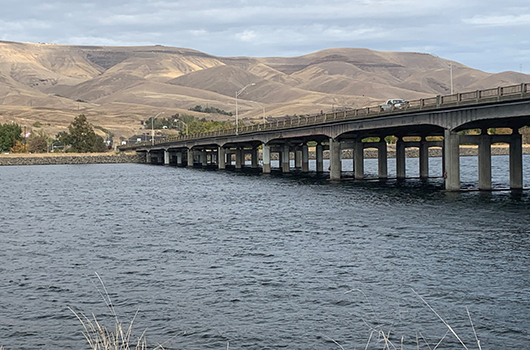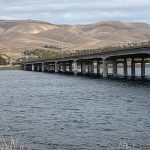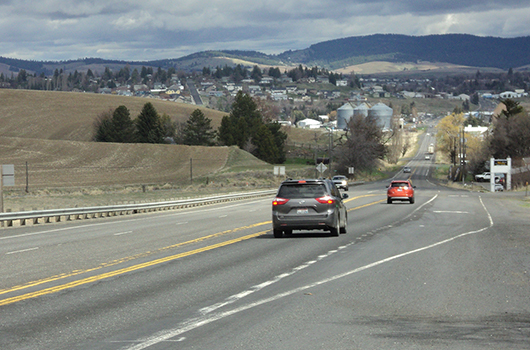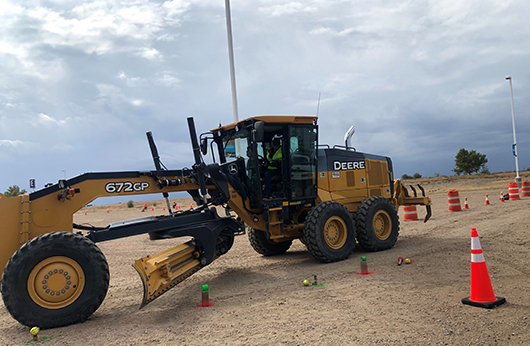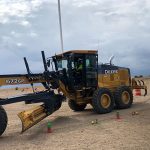It’s time to be “Idaho Ready” for winter driving

Ahead of the busy holiday travel season, the Idaho Transportation Department (ITD) encourages drivers to be “Idaho Ready” for winter driving. ITD’s annual winter safety campaign aims to help drivers prepare for challenging conditions on the state’s highways, before hitting the road.
“Idaho Ready” tips and resources will be shared weekly through ITD’s social media accounts and website itd.idaho.gov/travel. Short videos, blog posts, infographics, and photos will teach drivers how to safely get around this winter. Planned topics include navigating the new Idaho 511, general winter driving tips for Idaho newcomers, how to keep vehicles ready for colder temperatures, and snowplow ride along videos to hear safety advice straight from ITD operators.
Each winter ITD’s 550 hardworking snowplow operators travel a combined 3.4 million miles clearing roads across the state. “Idaho Ready” also focuses on keeping these important employees safe. When encountering a snowplow on the road, drivers are reminded, the safest place is behind the plow—never pass a snowplow on the right.
Other quick winter travel tips:
- Check the road conditions before traveling. Visit 511.idaho.gov or download the Idaho 511 app for an easy look at weather reports, cameras, and more. Idaho 511 updates are now tweeted too! Follow @Idaho511 on Twitter.
- Keep a winter emergency kit in your car with food/water, small shovel, warm blanket, etc.
- When roads are wet or icy, slow down and give yourself more stopping distance. Turn off cruise control and remember, bridges and overpasses are the first to freeze when temperatures drop.
- If you do slide, stay calm, brake very gently, and turn your wheel in the direction of the skid. Try not to overcorrect.
- Keep your windshield completely clear of snow and ice. Fill up on windshield washer fluid, make sure your tires are in good shape, and battery is charged. Learn how to use tire chains and carry them with you.
- Give our snowplow drivers room to work. Never pass a snowplow on the right! The safest place is behind the plow where the road is clear.
- Let others know your travel plans, especially if you will be driving through areas with no cell service. Check in when you make it.
- Beware of drowsy driving! Stop and rest when needed, and plan breaks on long road trips. Rest areas are mapped on Idaho 511.
- If your holiday celebrations include alcohol, plan ahead for a sober ride home. Look out for your friends and family and help them get home safely too.
- Buckle up, stay engaged behind the wheel, and drive for the conditions this winter.
Follow along with ITD and the Idaho Ready campaign this winter:
- Facebook- Idaho Transportation Department (ITD)
- Twitter- @IdahoITD
- YouTube- Idaho Transportation Department
- Online- itd.idaho.gov/travel
- Idaho 511- 511.idaho.gov, or download the app

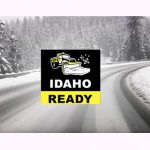
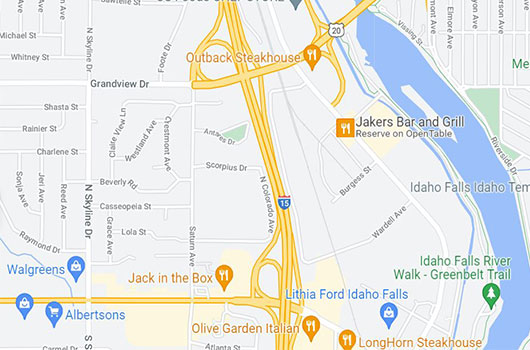

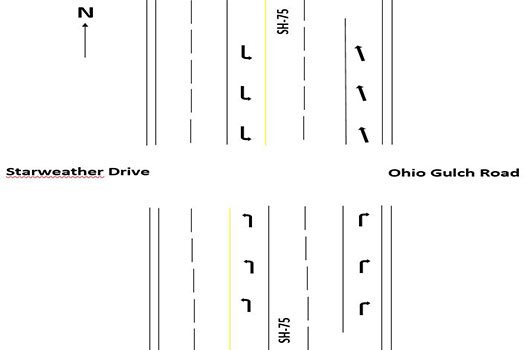
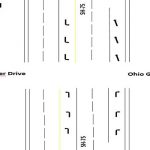
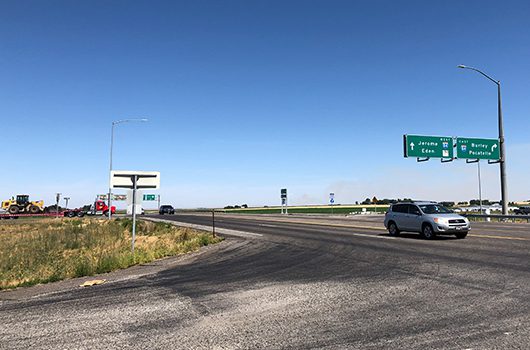

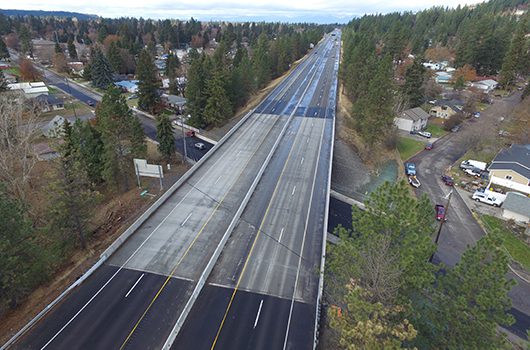
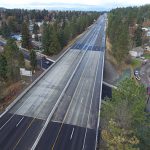
 A pair of bridges constructed on US-20 in south-central Idaho replaced culverts over Willow and Rock Creek, remedied the failing multi-plate metal culverts that prohibited fish spawning and wildlife migration for decades, and restored wildlife habitats and streams for safe fish passage under the highway. The project also addressed vehicle-wildlife collisions by building animal crossings into the design of the bridges. The Rock Creek bridge section of US-20 saw 64 vehicle-wildlife collisions over the last five years alone. Idaho Fish & Game and ITD installed game cameras to monitor the environmental benefits of the projects, and within a few months, fish were discovered swimming upstream to spawn, and multiple deer (and a moose) were seen traveling along the channels under the bridges.
A pair of bridges constructed on US-20 in south-central Idaho replaced culverts over Willow and Rock Creek, remedied the failing multi-plate metal culverts that prohibited fish spawning and wildlife migration for decades, and restored wildlife habitats and streams for safe fish passage under the highway. The project also addressed vehicle-wildlife collisions by building animal crossings into the design of the bridges. The Rock Creek bridge section of US-20 saw 64 vehicle-wildlife collisions over the last five years alone. Idaho Fish & Game and ITD installed game cameras to monitor the environmental benefits of the projects, and within a few months, fish were discovered swimming upstream to spawn, and multiple deer (and a moose) were seen traveling along the channels under the bridges.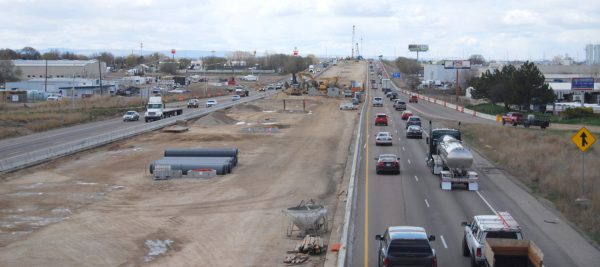 ITD won this award for the work on Interstate 84 through the Treasure Valley, the most heavily traveled route in the state, which sees more than 130,000 vehicles per day. The work kept travel lanes open and moving, was delivered under budget and on time and utilized a new-to-Idaho method to enhance safety in the construction corridor. That safety provision was a towing service that moved disabled vehicles off the road and out of the travel lanes to keep traffic moving and assist first responders. Law enforcement was averaging 1.5 hours per incident prior to the implementation of the Safety Service Patrol. The service also saved hundreds of hours for the traveling public and millions of dollars for shippers.
ITD won this award for the work on Interstate 84 through the Treasure Valley, the most heavily traveled route in the state, which sees more than 130,000 vehicles per day. The work kept travel lanes open and moving, was delivered under budget and on time and utilized a new-to-Idaho method to enhance safety in the construction corridor. That safety provision was a towing service that moved disabled vehicles off the road and out of the travel lanes to keep traffic moving and assist first responders. Law enforcement was averaging 1.5 hours per incident prior to the implementation of the Safety Service Patrol. The service also saved hundreds of hours for the traveling public and millions of dollars for shippers.

